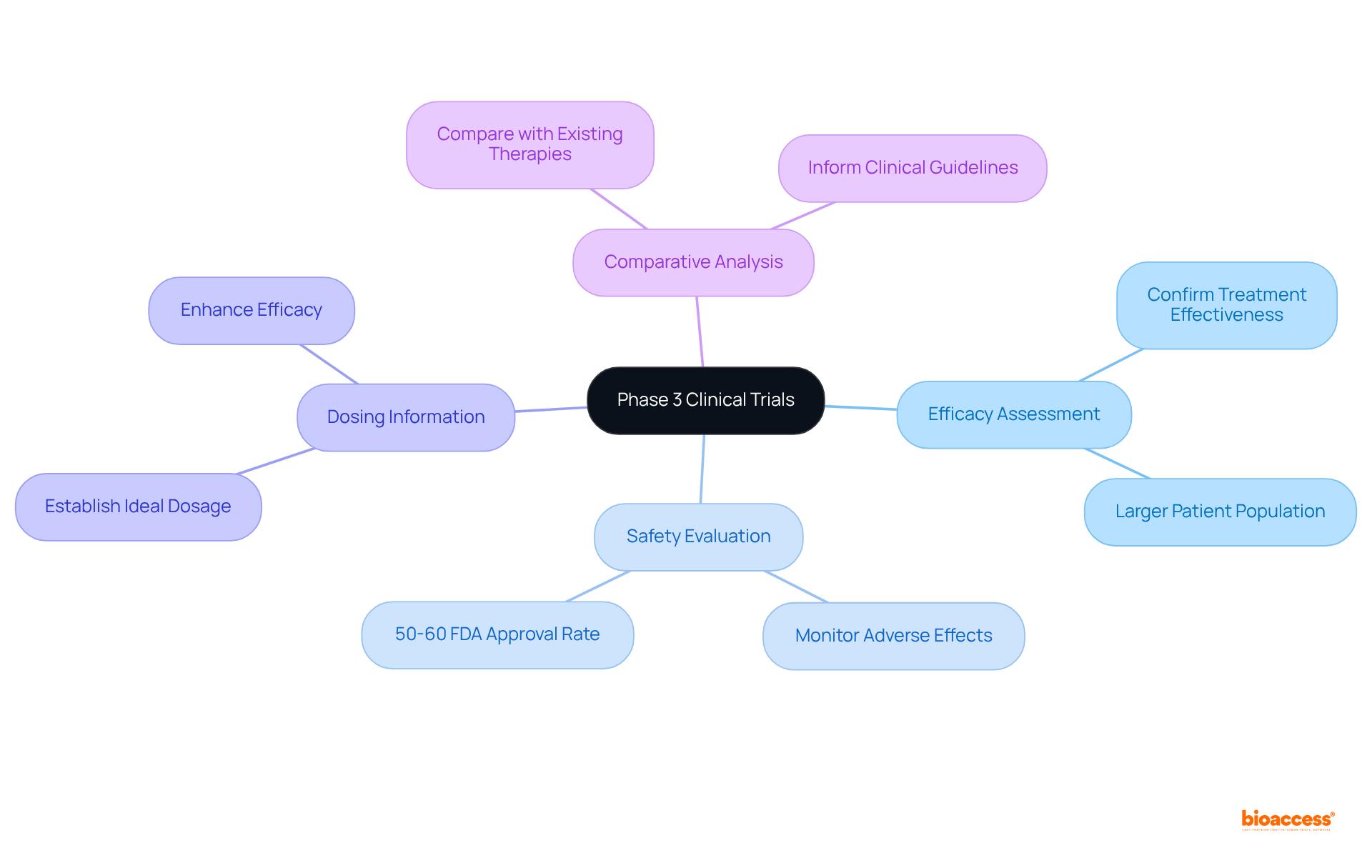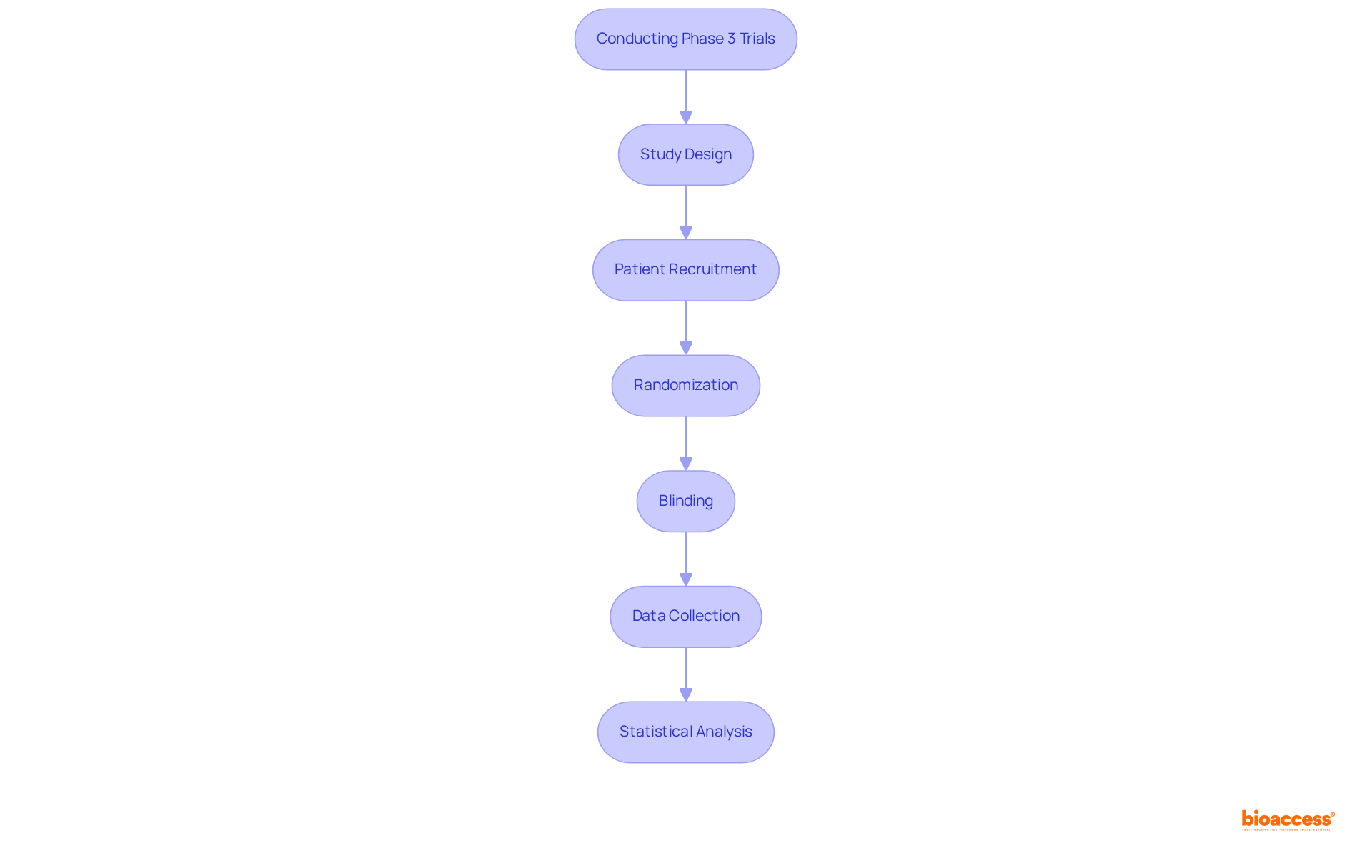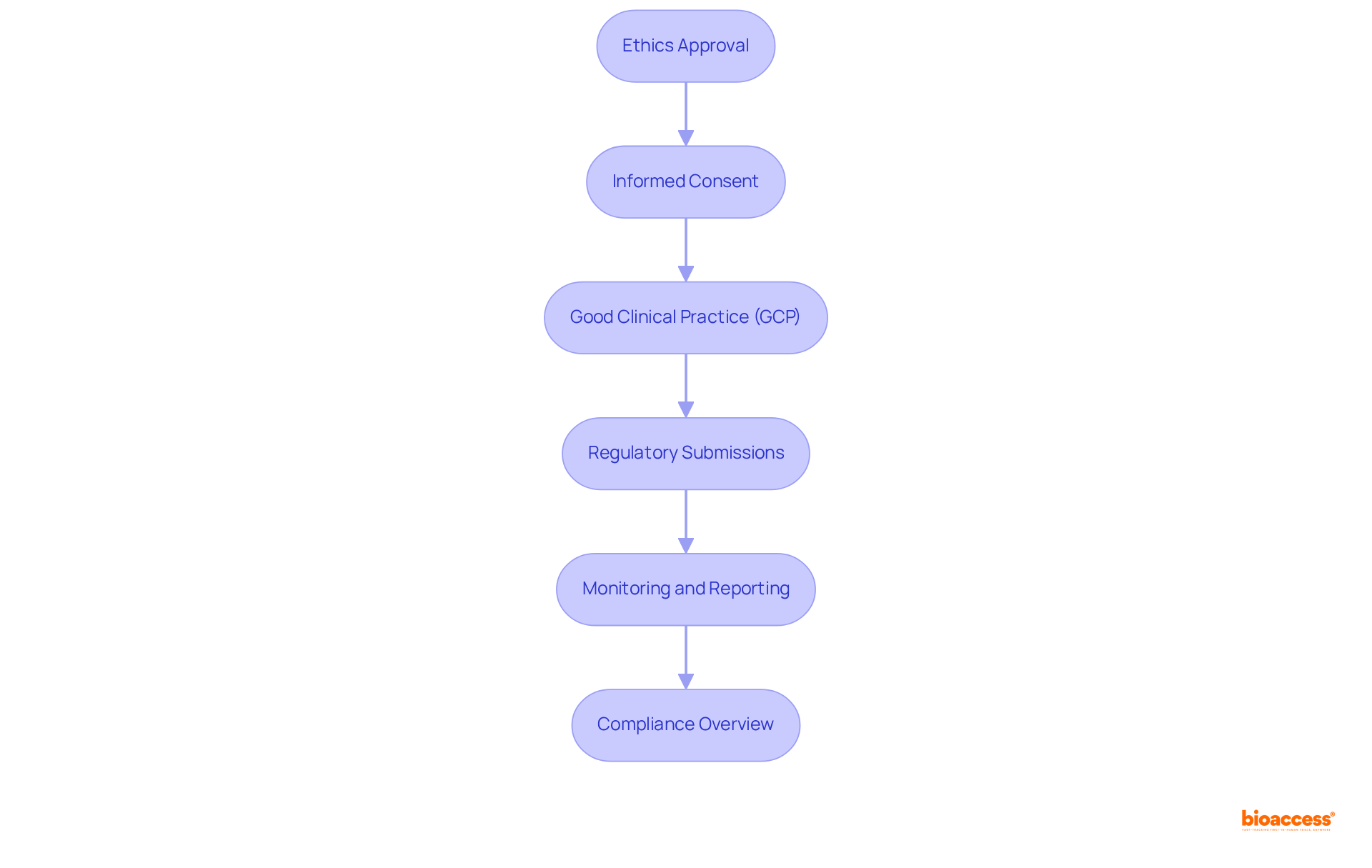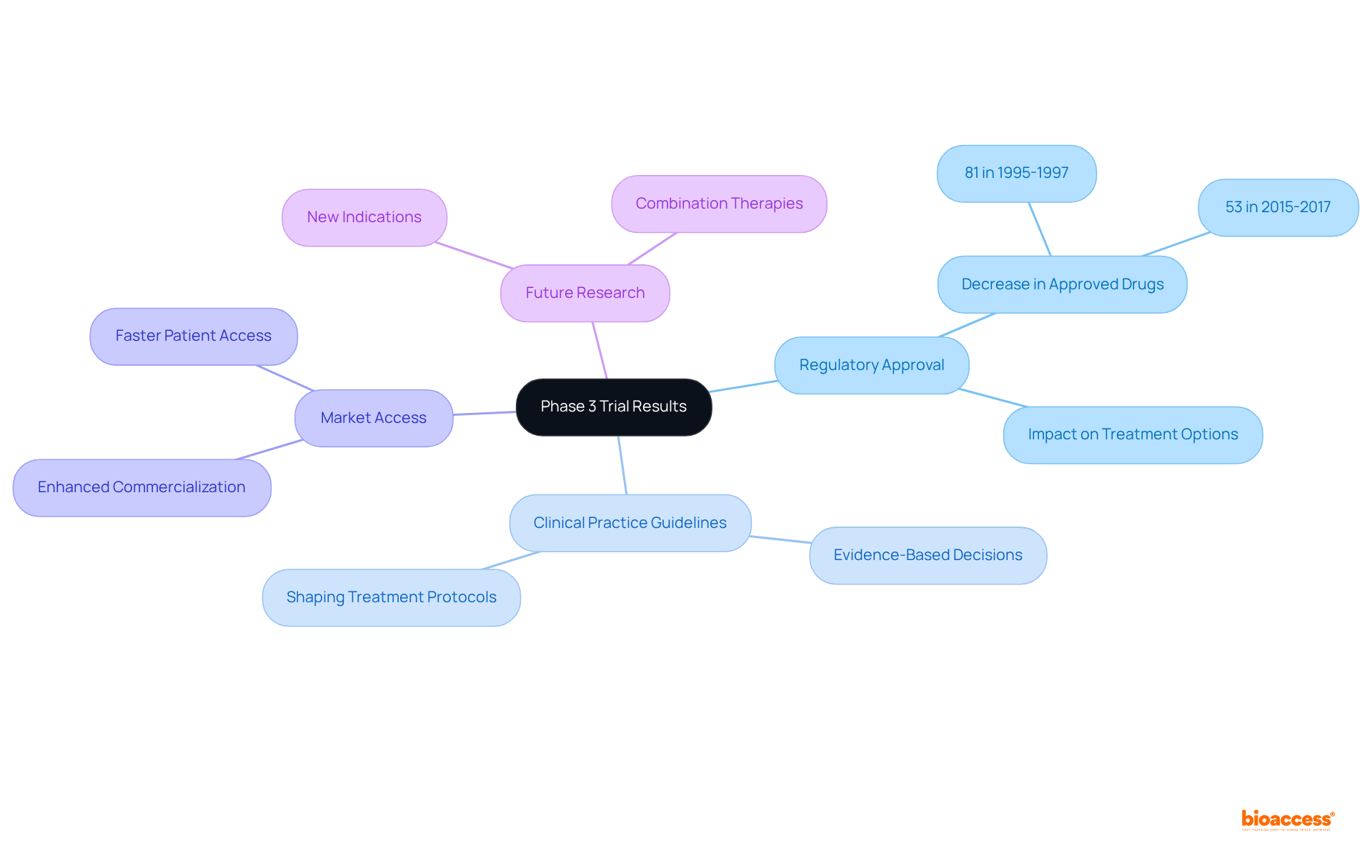


Phase 3 clinical trials are essential for evaluating the efficacy and safety of new treatments prior to regulatory approval. These trials focus on:
They play a pivotal role in drug development, generating crucial data that significantly influence regulatory submissions, clinical guidelines, and ultimately, patient care practices. The importance of these trials cannot be overstated, as they are foundational in ensuring that new therapies are both effective and safe for patient use.
The journey of bringing a new medication to market is fraught with challenges, particularly during the critical Phase 3 clinical trials. These trials represent the final hurdle before regulatory approval, where the efficacy and safety of a treatment are rigorously evaluated in larger patient populations. Readers will delve into the essential objectives and methodologies that define this stage, uncovering the intricate processes that ensure only the most effective therapies reach patients. However, with a staggering dropout rate of nearly 50% in drug development, what factors contribute to the success or failure of these pivotal trials?
Stage 3 clinical trial phase 3 assessments represent the final evaluation stage prior to the presentation of a new medication or procedure for regulatory authorization. These trials are pivotal in the drug development process, with key objectives that include:
The significance of clinical trial phase 3 studies is highlighted by their role in supplying essential information for regulatory submissions, influencing care guidelines, and impacting patient care practices. With an estimated completion rate of 84.9% for clinical trial phase 3 assessments, the information generated during this phase is crucial for ensuring that only the safest and most effective treatments reach patients. Furthermore, extensive clinical study management services, such as those provided by bioaccess, play an essential role in this process. These services encompass feasibility studies, site selection, compliance assessments, experimental setup, import permits, project management, and reporting, all of which contribute to the successful execution of Stage 3 experiments.
Moreover, case studies have demonstrated that thorough safety assessments during the clinical trial phase 3 can reveal uncommon adverse effects not previously observed, emphasizing the importance of this stage in the clinical research process. Ongoing safety monitoring post-approval is crucial, as highlighted in studies on post-marketing drug withdrawals. Insights from specialists, including Eungdo Kim, indicate that the quality of clinical studies is a critical indicator for progressing to the next level, further demonstrating the significance of comprehensive assessments during Stage 3.

Conducting Phase 3 trials involves several key methodological steps that are essential for ensuring the integrity and validity of the study outcomes:
Each of these steps is essential to the integrity of the assessment and the validity of its outcomes, ultimately contributing to the successful advancement of medical innovations.

Navigating regulatory compliance in Phase 3 trials necessitates a thorough understanding of several key requirements:
Ethics Approval: Securing approval from an Institutional Review Board (IRB) or Ethics Committee (EC) is crucial to ensure that the study adheres to ethical standards. The FDA's upcoming guidance will streamline this process by allowing a single IRB to oversee multicenter studies, thereby reducing duplication and enhancing efficiency.
Informed Consent: It is imperative that all participants provide informed consent, fully understanding the risks and benefits associated with their participation. This process must be transparent, allowing participants to ask questions and withdraw at any time, thereby reinforcing the principle of respect for persons.
Good Clinical Practice (GCP): Adhering to GCP guidelines is essential for upholding the integrity of the study and ensuring participant safety. These guidelines emphasize the importance of ethical conduct and the welfare of research subjects, a necessity underscored by historical abuses in clinical research.
Regulatory Submissions: Preparing and submitting the necessary documentation to regulatory bodies, such as the FDA and EMA, is a critical step in the approval process. This encompasses comprehensive information regarding the study design, participant recruitment methods, and risk management strategies. Bioaccess offers comprehensive support in this area, including feasibility studies and compliance reviews to ensure all documentation meets regulatory standards for clinical trial phase 3.
Monitoring and Reporting: Ongoing monitoring of trial progress is vital. Any adverse events or protocol deviations must be reported promptly to maintain participant safety and compliance with regulatory standards. The Belmont Report emphasizes the significance of beneficence and justice in this context, maintaining that risks are minimized while maximizing potential benefits. Bioaccess provides robust project management and reporting services to facilitate this process, ensuring that all study status updates and adverse events are meticulously documented and communicated.
Grasping these compliance requirements is crucial for preserving the integrity of the study and ensuring participant safety, ultimately aiding the progress of medical research and public health.

The outcomes of the clinical trial phase 3 carry profound implications across various dimensions of healthcare.
Regulatory approval is often achieved through the pivotal positive results from clinical trial phase 3, which lead to the approval of new treatments. This not only expands therapeutic options for patients but also aligns with the FDA's evolving standards, which have seen a decrease in the percentage of newly approved drugs supported by multiple efficacy trials—from 81% in 1995-1997 to just 53% in 2015-2017.
The results from clinical trial phase 3 studies play a crucial role in shaping clinical practice guidelines. They provide healthcare providers with the evidence needed to make informed, evidence-based decisions, ensuring that patient care is grounded in the latest scientific data.
Market Access: Successful clinical trial phase 3 studies significantly enhance market access opportunities for companies. By showcasing the effectiveness and safety of new methods, these studies aid the commercialization process, enabling innovative products to reach patients more quickly.
Future Research: The outcomes of clinical trial phase 3 studies frequently emphasize areas ready for additional exploration, including possible new indications or combinations with current therapies. This ongoing research is essential for advancing medical knowledge and enhancing care alternatives.
Understanding the implications of the results from clinical trial phase 3 is essential for all stakeholders—researchers, clinicians, and patients—as they navigate the complex and evolving landscape of medical treatments.

Mastering Phase 3 clinical trials is imperative for ensuring that new medications and interventions are both effective and safe for patient use. This final stage of evaluation serves as a critical gateway for regulatory approval and the establishment of treatment protocols that will ultimately enhance patient care.
The article explores the key objectives of Phase 3 trials, including:
It underscores the importance of rigorous methodologies—such as study design, patient recruitment, randomization, and compliance with regulatory standards—in yielding reliable and impactful results. These trials not only inform clinical guidelines but also shape the future landscape of healthcare by identifying new therapeutic options and potential areas for further research.
Given the critical nature of Phase 3 trials, stakeholders must prioritize comprehensive planning and execution. By grasping the implications of trial outcomes, researchers, clinicians, and regulatory bodies can collaborate effectively to ensure that only the most effective and safe treatments reach patients. The ongoing commitment to excellence in clinical trial design and execution will not only enhance patient care but also propel the advancement of medical science, ultimately leading to improved health outcomes for all.
What are phase 3 clinical trials?
Phase 3 clinical trials are the final evaluation stage before a new medication or procedure is presented for regulatory authorization. They are crucial in the drug development process.
What are the main objectives of phase 3 clinical trials?
The main objectives include efficacy assessment, safety evaluation, dosing information, and comparative analysis against existing therapies.
How is efficacy assessed in phase 3 trials?
Efficacy is assessed by confirming the treatment's effectiveness in a larger patient population compared to a control group, which demonstrates its therapeutic value.
Why is safety evaluation important in phase 3 clinical trials?
Safety evaluation is important to monitor adverse effects and ensure the intervention is safe for widespread use. Approximately 50%-60% of drugs in this phase receive FDA approval, highlighting the need for thorough safety assessments.
What is the significance of dosing information in phase 3 trials?
Establishing the ideal dosage is vital for enhancing efficacy while minimizing side effects, which is crucial for patient adherence and the success of treatment.
How do phase 3 trials compare new interventions to existing therapies?
Phase 3 trials conduct comparative analyses to establish the relative benefits of the new intervention, which helps inform clinical guidelines and practice.
What is the completion rate for phase 3 clinical trials?
The estimated completion rate for phase 3 clinical trials is 84.9%, indicating the importance of the information generated during this phase.
What role do clinical study management services play in phase 3 trials?
Clinical study management services assist with feasibility studies, site selection, compliance assessments, experimental setup, import permits, project management, and reporting, all contributing to the successful execution of phase 3 trials.
Why are thorough safety assessments crucial during phase 3 trials?
Thorough safety assessments can reveal uncommon adverse effects not previously observed, making this stage essential in the clinical research process.
What is the importance of ongoing safety monitoring post-approval?
Ongoing safety monitoring post-approval is crucial to ensure continued safety and efficacy of the treatment, as demonstrated in studies on post-marketing drug withdrawals.